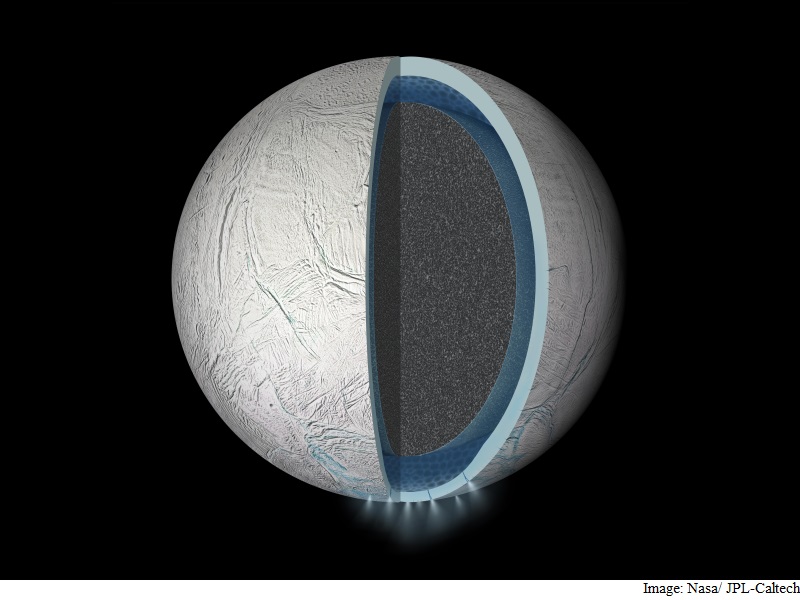
There is a vast water reservoir beneath the icy crust on Saturn’s moon Enceladus – now dubbed as “global ocean” – that is behind the fine spray of water vapour and icy particles Nasa’s Cassini spacecraft has observed for years.
Researchers found that the magnitude of the geologically active moon’s very slight wobble, as it orbits Saturn, can only be accounted for if its outer ice shell is not frozen solid to its interior, meaning a “global ocean” must be present.
Previous analysis of Cassini data suggested the presence of a lens-shaped body of water, or sea, underlying the moon’s south polar region.
However, gravity data collected during the spacecraft’s several close passes over the south polar region lent support to the possibility the sea might be global.
“This was a hard problem that required years of observations, and calculations involving a diverse collection of disciplines, but we are confident we finally got it right,” said Peter Thomas, Cassini imaging team member at Cornell University, Ithaca, New York, in a statement.
Cassini is scheduled to make a close flyby of Enceladus on October 28, in the mission’s deepest-ever dive through the moon’s active plume of icy material.
The spacecraft will pass a mere 49 kms above the moon’s surface.
Earlier, Cassini scientists analysed more than seven years’ worth of images of Enceladus taken by the spacecraft which has been orbiting Saturn since mid-2004.
They found Enceladus has a tiny, but measurable wobble as it orbits Saturn.
Because the icy moon is not perfectly spherical and because it goes slightly faster and slower during different portions of its orbit around Saturn the giant planet subtly rocks Enceladus back and forth as it rotates.
The team plugged their measurement of the wobble, called a libration, into different models for how Enceladus might be arranged on the inside, including ones in which the moon was frozen from surface to core.
“If the surface and core were rigidly connected, the core would provide so much dead weight the wobble would be far smaller than we observe it to be,” explained Matthew Tiscareno, Cassini participating scientist at the SETI Institute in California.
“This proves that there must be a global layer of liquid separating the surface from the core,” he added.
The mechanisms that might have prevented Enceladus’ ocean from freezing still remain a mystery.
According to Thomas and his colleagues, tidal forces due to Saturn’s gravity could be generating much more heat within Enceladus than previously thought.
[“source-gadgets.ndtv”]






